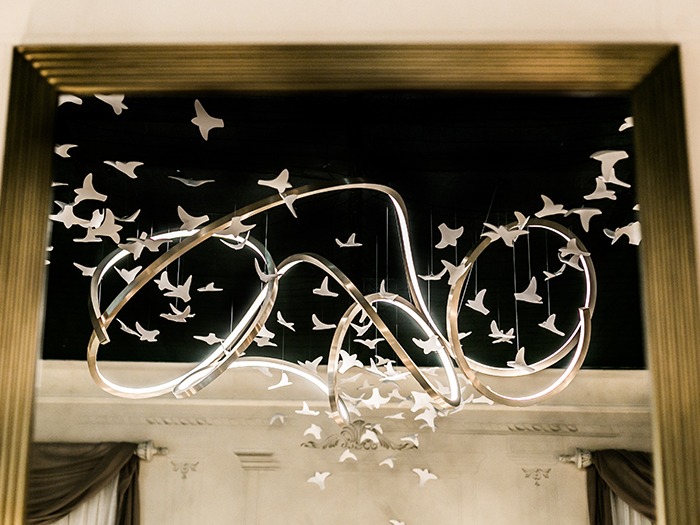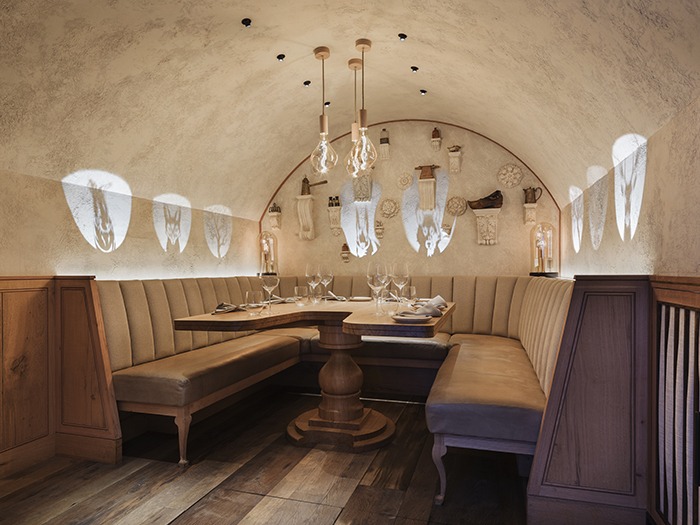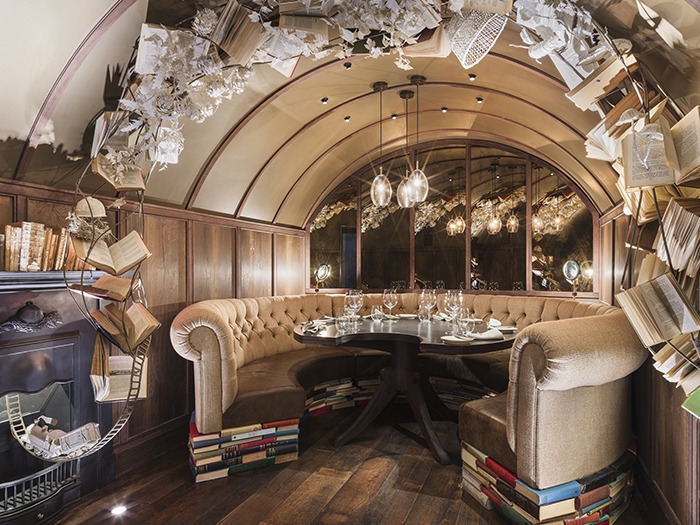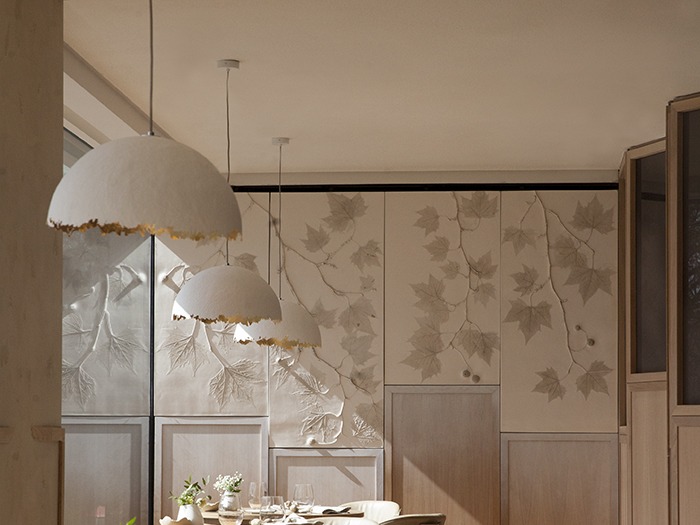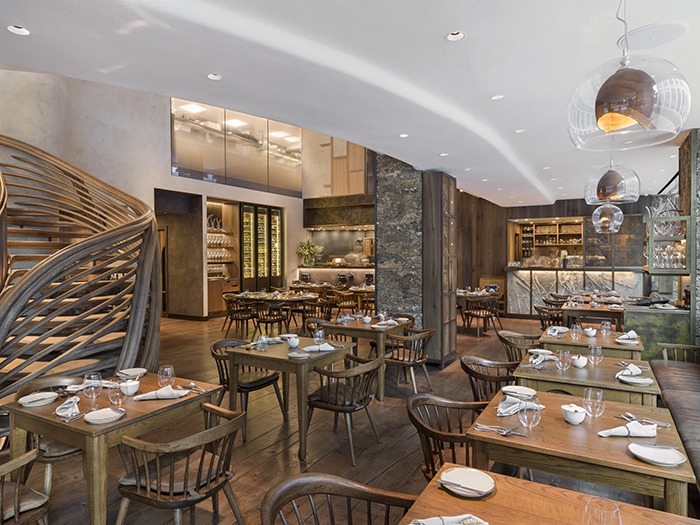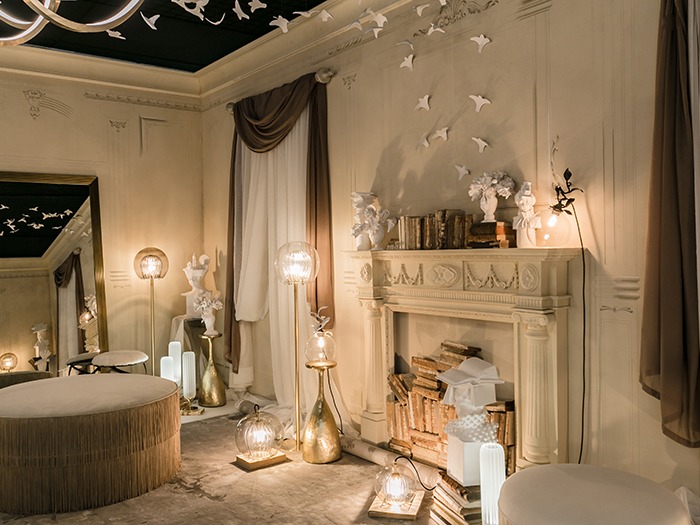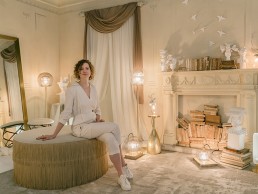
Rose Murray
darc’s Editor Helen Ankers sat down with Rose Murray, Founder of These White Walls interior design studio based in London, UK, to find out more about the all-female led company and its design approach.
Murray has always had a fascination with design and how spaces can “redefine our individual and collective experience” but began her education with a degree in Anthropology and career with an internship at Vogue and then later, styling editorials and television sets for the BBC. “I then moved into the world of immersive events, designing luxury dining spaces and performative events for a more radically-minded corporate clientele,” Murray tells darc.
“It was never my intention to become an interior designer, but when the pop-ups became permanent and I began working with architects, I began to see how my multidisciplinary experience could be applied within the world of interiors to create something different, and that’s how the studio emerged.”
These White Walls was established in 2017 as a direct result of Murray filling a role in the industry she felt it was missing. “My vision was to create a new and more meaningful aesthetic, one that I had not yet encountered in reality,” she explains. “I knew I wanted my work to be transformative and that my approach would combine my three fascinations – narrative, materials and artistry – in order to establish a unique voice in design. That vision has not changed but rather evolved; I learn more about myself through the work. More recently I have articulated the vision as a blank canvas for creativity, whereby I can begin by wiping the slate clean for my clients, start with a blank page and create an entirely new vision of their reality from there.
“I wouldn’t say I have a signature style, but rather a distinct approach towards design: I apply a tripartite approach, exploring the potential of [the previously mentioned] narrative, materials and artistry to work cohesively and establish a new aesthetic.
“Visually, each space has its own style that emerges as a result of the highly personalised approach, working with clients individually, but I can see beneath it is a consistently well considered refinement, and a boldly elegant style that is sometimes difficult to define.”
Working with a core team of four women in the studio, Murray is also supported by a wider team of up to 10 that work remotely, including visualisers and technicians. “Working this way means that our boutique business can offer a highly bespoke service while remaining agile; we can swell and adapt when the workload demands it,” she says. “It feels very organic for me to run the studio this way, as I can keep directing the creative course of our work while retaining a highly personalised approach to the projects.”
Working with an immediate all-female team was not a conscious decision, Murray explains, but more of a natural coincidence. “I love working with women and was lucky enough to be nurtured by many through my early career, before diving into more male-dominated industries,” she says.
“I think that experience has subconsciously driven a desire to give back to young women who are dreaming big in a similar way. I think I attract talented women to the studio because of the strong feminine energy that runs beneath it, but we attract equal numbers of men, so there is no bias behind it – the studio is open to all genders, as long as you are driven to make amazing work its doors are open.”
When asked about her relationship with lighting, it is clear it plays an integral role in Murray’s designs. Drawing experience from her previous ventures on film sets and large-scale event spaces, she quickly became aware of how lighting can transform a space and bring it to life. “I discovered how, no matter how beautifully you dressed the space, the magic really happens when the lights are turned on,” she says.
“I also learned a lot of trickery while on set, often toying with refractive surfaces and layered light to create more depth and ambience. That experience has stayed with me over the years, and now I always design with that in mind.
“Lighting should awaken the design concept behind the space; it can do so by layering its own visual narrative on top. Light stimulates the emotions and should enable the user to engage more meaningfully with the space itself and the objects within it. We are all creating experience for those who use the space, and every element within the design should contribute to maximising that potential.”
Murray has also developed a strong understanding of the cohesive relationship between architectural and decorative lighting and how each can influence and work in harmony in a space. “I see the two working synergistically together; architectural lighting is vital for functionality, and equally for enabling us to appreciate the form of space within the building. Architectural lighting can really amplify our experience of space as we move through it. Decorative lighting adds to this in a more overt manner, affecting the ambience in a more characterful way. The two should always complement each other.”
Looking back to the studio’s first major project, HIDE restaurant in Mayfair, UK, the team set their standards high by offering something highly unique at the time. “I knew the project was an opportunity to create something spectacular, and thankfully the clients gave me a great deal of creative freedom to surprise them throughout the process,” says Murray. “It was a total pleasure to be able create so much bespoke – from the dining tables to the drink’s trolleys, to the decorative studio. Every detail makes me proud and that level of detail is the reason that we have attracted a global clientele from that foundation.”
Working with lighting designers Speirs and Major, the teams brought the HIDE design concept to life, in particular in the private dining areas, as Murray notes: “The Shadow Room was an interesting example, as the room was very much defined by playful projections that appear throughout the dining experience. Since then, we have moved to working more directly with lighting manufacturers to design bespoke objects as well as large scale installations. One of our current projects involves a 10-metre bespoke gilded glass chandelier that responds to stimulus within the space. It aims to capture natural elements and translate them into an interactive form. I can’t reveal more than that at present, but I am excited to see the design unfolding.”
Continuing the discussion about her role as a female designer supported by an immediate all-female team, darc asked how supportive the design industry of female designers was and what Murray’s personal experience has been like.
“Working in film, events and commercial hospitality design – particularly from construction level upwards – has meant that I have spent most of my adult life working in male-dominated industries. Being the only female in the room meant that I had to learn to speak up and stand my ground sooner than I might have otherwise experienced.
“It can be tough to be taken seriously, particularly as a young female, but it also teaches you resilience. I learned to speak with certainty and enough integrity to convince those around me to work towards that same goal. No matter what gender you are, if you are brave enough to stand up and inspire others around you, and offer a vision beyond what already exists, then you will always receive the support you need to achieve it.”
With attitudes changing, in large part thanks to initiatives such as Women in Lighting, one way Murray feels the industry can continue to support women within design is to “remain open and collaborative and by creating platforms for other women to showcase their work beside your own, will help greatly.”
Referring to HIDE as an example again, Murray explains how she found space to commission three female artists to create site-specific artworks that responded to the design concept and interior architecture. “I worked closely with each of these women, observing the nascent works, discussing the right materials and helping to guide some of the forms to ensure the works remained in harmony with the wider vision, but ultimately it was an opportunity for them to shine and create their own work within that same space. The result was mutually supportive and a great success for us all.”
Reflecting on the recent impacts the global pandemic of Covid-19 has created, Murray sums up the importance of questioning everything: “we should apply this same approach toward addressing the underlying constructs that cause inequality in our industry. The industry has faced tough times this year with the global Covid crisis, which has affected everyone at some level. The response so far has widely been to override our differences for the sake of survival, and the community is emerging far stronger and more collaboratively as a result.
“We must hold onto this lesson once the pandemic passes, continue to work together rather than apart, and embrace technology as a great enabler to achieve this,” she concludes.



